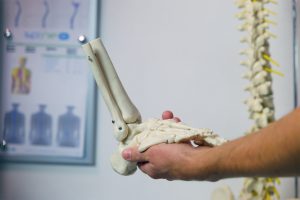
I’m interested in how many treatments are typically needed to treat a heel spur?
The size of the spur is 13mm/0.55inch.
A heel spur is a finding on X-rays. There are so-called “upper” and “lower” heel spurs. The first one appears at the attachment of the Achilles tendon to the heel bone. The second represents a bony protrusion in the lesser-known muscle, flexor digitorum brevis (short toe flexor). Above this protrusion lies the large ligament called the plantar fascia, whose attachment can become inflamed in a way that causes pain in the lower part of the heel during walking, and in acute conditions, even at rest. In this sense, the cause of the pain is not the bony protrusion (spur) but the inflammation of the plantar fascia attachment due to overuse. This overuse can be caused in various ways, such as flat feet, previous ankle sprains, prolonged standing or walking, especially in inadequate footwear, and similar factors. Based on the assessment of the probable cause of inflammation and its condition, therapy is determined, and its duration is estimated. Since we do not treat the spur itself, its size does not affect the method and duration of treatment. Treatment may only involve changing footwear or making orthopedic insoles. In addition, for some patients, stretching and proprioception exercises alone may be sufficient. For some, one or several manipulations of the small foot joints may be enough. In other cases, it is necessary to stimulate the healing of the damaged and inflamed ligament area through a combination of manual therapy and physical therapy modalities (laser, ultrasound, radiofrequency therapy, FMS…). In the most severe cases, when the condition requires it, shock wave therapy (ESWT) can be applied. The duration of treatment depends on the specific case and therapeutic approach and can be approximately determined at the first examination, during which we assess the level of inflammation and damage to the plantar fascia using ultrasound diagnostics.
